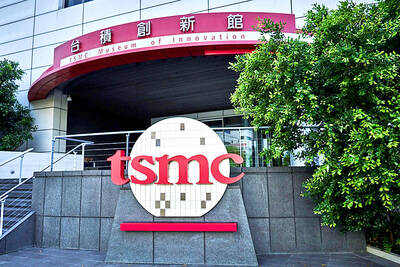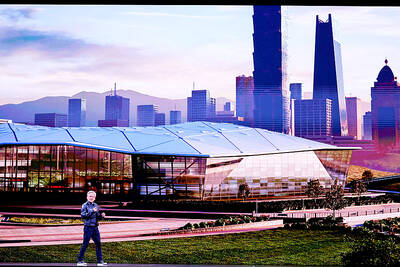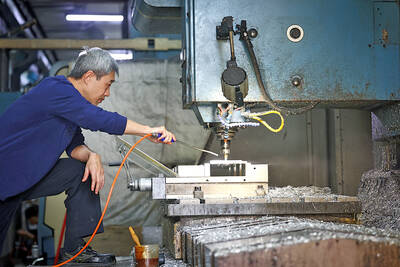Lite-On Technology Corp (光寶科技), a leading electronic component supplier, yesterday gave a cautious outlook for the second half of this year, despite last quarter posting the best net profit in nine years.
“We would see better results this quarter, as it is the traditional peak season for the electronics industry,” Lite-On vice chairman and chief operating officer Warren Chen (陳廣中) told an investors’ conference in Taipei.
However, Chen said he remains wary about sluggish market demand in the coming months.
“The US-China trade conflict seems to be slowing down, but it remains unresolved,” he said, adding that it has dampened overall demand for mobile phones and cloud-computing equipment.
Chen predicted a decline in automotive electronics shipments next quarter, saying that the Chinese automotive market has declined by double-digit percentages over the past months as the US and European markets also contracted.
“However, we are still hopeful, as we have new applications for our optoelectronics segment next year,” he said, citing time-of-flight cameras and ultraviolet LED applications.
The company is building a plant in Vietnam whose first phase would be completed by next month, Chen said, adding that the plant is expected to start shipments next year.
The first phase of construction at the company’s plant in Kaohsiung has been completed and the plant has begun production, he said, adding that the firm is preparing to relocate the production of data center components and chargers to Taiwan “in case the trade conflict worsens.”
The company reported net profit of NT$2.39 billion (US$76.86 million) for last quarter, or earnings per share of NT$1.03.
Gross margin and operating margin hit records of 15.7 percent and 5.3 percent respectively thanks to operational efficiency, supply chain management and product-mix amelioration, the company said.
Second-quarter revenue rose 8 percent on a quarterly basis, driven by growth in power supply, optoelectronics used in cloud computing, artificial intelligence-applied smart home devices and gaming applications, Lite-On said.
However, revenue declined 2 percent year-on-year — excluding the sale of Lite-On’s mobile phone camera module and mobile mechanical business — which the company blamed on the trade spat, which it said dragged down demand.
The information technology segment contributed 66 percent of overall revenue, followed by the optoelectronics segment with 16 percent and the storage segment with 13 percent, company data showed.

SEEKING CLARITY: Washington should not adopt measures that create uncertainties for ‘existing semiconductor investments,’ TSMC said referring to its US$165 billion in the US Taiwan Semiconductor Manufacturing Co (TSMC, 台積電) told the US that any future tariffs on Taiwanese semiconductors could reduce demand for chips and derail its pledge to increase its investment in Arizona. “New import restrictions could jeopardize current US leadership in the competitive technology industry and create uncertainties for many committed semiconductor capital projects in the US, including TSMC Arizona’s significant investment plan in Phoenix,” the chipmaker wrote in a letter to the US Department of Commerce. TSMC issued the warning in response to a solicitation for comments by the department on a possible tariff on semiconductor imports by US President Donald Trump’s

The government has launched a three-pronged strategy to attract local and international talent, aiming to position Taiwan as a new global hub following Nvidia Corp’s announcement that it has chosen Taipei as the site of its Taiwan headquarters. Nvidia cofounder and CEO Jensen Huang (黃仁勳) on Monday last week announced during his keynote speech at the Computex trade show in Taipei that the Nvidia Constellation, the company’s planned Taiwan headquarters, would be located in the Beitou-Shilin Technology Park (北投士林科技園區) in Taipei. Huang’s decision to establish a base in Taiwan is “primarily due to Taiwan’s talent pool and its strength in the semiconductor

Industrial production expanded 22.31 percent annually last month to 107.51, as increases in demand for high-performance computing (HPC) and artificial intelligence (AI) applications drove demand for locally-made chips and components. The manufacturing production index climbed 23.68 percent year-on-year to 108.37, marking the 14th consecutive month of increase, the Ministry of Economic Affairs said. In the first four months of this year, industrial and manufacturing production indices expanded 14.31 percent and 15.22 percent year-on-year, ministry data showed. The growth momentum is to extend into this month, with the manufacturing production index expected to rise between 11 percent and 15.1 percent annually, Department of Statistics

An earnings report from semiconductor giant and artificial intelligence (AI) bellwether Nvidia Corp takes center stage for Wall Street this week, as stocks hit a speed bump of worries over US federal deficits driving up Treasury yields. US equities pulled back last week after a torrid rally, as investors turned their attention to tax and spending legislation poised to swell the US government’s US$36 trillion in debt. Long-dated US Treasury yields rose amid the fiscal worries, with the 30-year yield topping 5 percent and hitting its highest level since late 2023. Stocks were dealt another blow on Friday when US President Donald